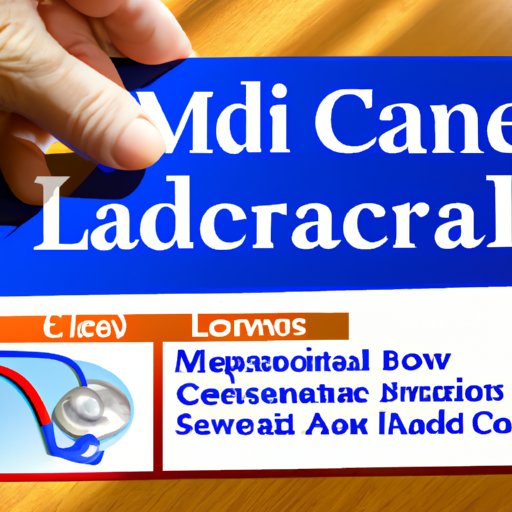An Overview of Medicaid Coverage for Long-Term In-Home Care
Long-term in-home care is a form of medical care that is provided in the patient’s home rather than in a hospital or nursing home setting. It can be used to provide assistance with activities of daily living, such as dressing, bathing, eating, and toileting, as well as more specialized medical care, such as wound care, injections, and catheter changes. Long-term in-home care can be provided by family members, professional caregivers, or home health agencies.
Medicaid is a government program that provides health insurance coverage for people with low incomes who meet certain eligibility requirements. Medicaid covers a variety of health care services, including long-term in-home care. However, the specific services covered and the eligibility requirements vary from state to state.
Exploring the Cost of Long-Term In-Home Care and Medicaid Coverage
The cost of long-term in-home care can vary greatly depending on the type of care that is needed and the provider that is chosen. On average, it can cost anywhere from $20 to $50 per hour for a professional caregiver. Home health agencies may charge an additional fee for their services, which can range from $50 to $100 per hour.
Medicaid will cover some or all of the costs associated with long-term in-home care, depending on the individual’s circumstances and the state in which they live. In most states, Medicaid will cover the cost of home health services, such as nursing care and physical therapy, as well as personal care services, such as help with bathing, dressing, and meal preparation. Some states may also cover the cost of medical equipment and supplies.
Understanding the Benefits of Long-Term In-Home Care and How Medicaid Can Help
Long-term in-home care can provide many benefits for those who need assistance with activities of daily living. It can help reduce the risk of falls, prevent the need for hospitalization, and improve quality of life. It can also provide much-needed companionship and emotional support for those who are isolated or have limited social contact.
Medicaid can help cover the cost of long-term in-home care for those who are eligible. This can help individuals and families save money on out-of-pocket expenses, allowing them to receive the care they need without having to worry about the financial burden.
Guidelines for Qualifying for Medicaid Coverage for Long-Term In-Home Care
In order to qualify for Medicaid coverage for long-term in-home care, individuals must meet certain eligibility requirements. These requirements vary by state, but generally include income and resource limits, age restrictions, and residency requirements. Individuals must also be certified by a physician as needing long-term in-home care.
To apply for Medicaid coverage for long-term in-home care, individuals will need to complete an application and provide documentation, such as proof of income and resources, proof of residency, and a doctor’s certification of need. The application process can take several weeks, so it is important to plan ahead and allow enough time for the application to be processed.
Common Questions about Medicaid Coverage for Long-Term In-Home Care
Many individuals have questions about Medicaid coverage for long-term in-home care. Here are some common questions and answers:
What types of services does Medicaid cover for long-term in-home care? Medicaid typically covers the cost of home health services, such as nursing care and physical therapy, as well as personal care services, such as help with bathing, dressing, and meal preparation. Some states may also cover the cost of medical equipment and supplies.
What are the limitations of Medicaid coverage for long-term in-home care? Medicaid coverage for long-term in-home care is limited to those who meet the eligibility requirements and have been certified by a physician as needing long-term in-home care. Additionally, coverage of specific services may vary by state.
Success Stories of People Who Received Medicaid Coverage for Long-Term In-Home Care
Many people have benefited from Medicaid coverage for long-term in-home care. Here are three stories of individuals who were able to receive the care they needed thanks to Medicaid:
Story 1: Mary was a 65-year-old woman who had recently been diagnosed with Parkinson’s disease. She was no longer able to take care of herself and needed help with activities of daily living, such as bathing, dressing, and preparing meals. With the help of Medicaid, she was able to receive the long-term in-home care she needed.
Story 2: John was a 75-year-old man who had recently suffered a stroke. He needed help with his physical therapy and other activities of daily living. Thanks to Medicaid, he was able to receive the long-term in-home care he needed to regain his strength and independence.
Story 3: Jane was an 80-year-old woman who was living alone and struggling to take care of herself. She needed help with basic tasks, such as bathing and preparing meals. With the help of Medicaid, she was able to receive the long-term in-home care she needed to stay safe and independent in her own home.
These stories demonstrate the importance of Medicaid coverage for long-term in-home care. Without it, many individuals would not be able to receive the care they need to stay safe and independent in their own homes.
Long-term in-home care can provide many benefits for those who need assistance with activities of daily living. Medicaid can help cover the cost of long-term in-home care for those who are eligible, making it easier for individuals and families to receive the care they need without having to worry about the financial burden.
(Note: Is this article not meeting your expectations? Do you have knowledge or insights to share? Unlock new opportunities and expand your reach by joining our authors team. Click Registration to join us and share your expertise with our readers.)
